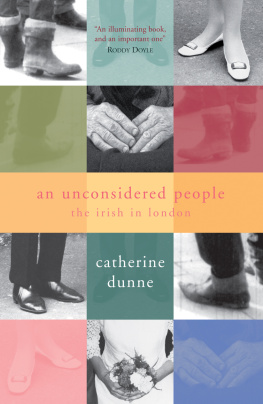On Writing, Editing, and Publishing
Jacques Barzun
Telling About Society
Howard S. Becker
Tricks of the Trade
Howard S. Becker
Writing for Social Scientists
Howard S. Becker
Permissions, A Survival Guide
Susan M. Bielstein
The Craft of Translation
John Biguenet and Rainer Schulte, editors
The Craft of Research
Wayne C. Booth, Gregory G. Colomb, and Joseph M. Williams
Glossary of Typesetting Terms
Richard Eckersley, Richard Angstadt, Charles M. Ellerston, Richard Hendel, Naomi B. Pascal, and Anita Walker Scott
Writing Ethnographic Fieldnotes
Robert M. Emerson, Rachel I. Fretz, and Linda L. Shaw
Legal Writing in Plain English
Bryan A. Garner
From Dissertation to Book
William Germano
Getting It Published
William Germano
A Poet's Guide to Poetry
Mary Kinzie
The Chicago Guide to Collaborative Ethnography
Luke Eric Lassiter
How to Write a BA Thesis
Charles Lipson
Cite Right
Charles Lipson
The Chicago Guide to Writing about Multivariate Analysis
Jane E. Miller
The Chicago Guide to Writing about Numbers
Jane E. Miller
Mapping It Out
Mark Monmonier
The Chicago Guide to Communicating Science
Scott L. Montgomery
Indexing Books
Nancy C. Mulvany
Developmental Editing
Scott Norton
Getting into Print
Walter W. Powell
The Subversive Copy Editor
Carol Fisher Sailer
A Manual for Writers of Research Papers, Theses, and Dissertations
Kate L. Turabian
Tales of the Field
John Van Maanen
Style
Joseph M. Williams
A Handbook of Biological illustration
Frances W. Zweifel
WILL DUNNE






In honor Of LLOYD RICHARDS
and with gratitude to MARY f. MCCABE
xv
xxiii
I
Designed for dramatic writers who are developing a script or about to begin one, this guide is a creative and analytical reference tool. It is composed not as a linear sequence of chapters, but as a collection of self-contained writing exercises to help you explore and refine your own unique material. These tools can be used at any time in any order and can be repeated as often as you like to make new discoveries. For best results, please take the time to read this introduction, which explains more about what the guide is and how to use it.

TO THE DRAMATIC WRITER
As a dramatic writer working on a play or screenplay, you are engaged in the process of telling a story. It is a process both old and new-old because its roots stretch back through centuries and offer time-tested principles to guide you, and new because it must be adapted to an utterly unique set of dynamics: you and the story you want to tell.
This guide is designed to help you manage both the old and the new of the storytelling process. Written from a playwright's perspective and making room in its embrace for both playwrights and screenwriters, the guide offers sixty-two in-depth character, scene, and story development exercises. The purpose of these tools is to spark creativity and steer analysis as you develop your script.
TOOLS FOR LEAPING INTO BLANK PAGES
The exercises in this guide build on certain basic assumptions. First, though stage and film are each a distinct medium, the writers of plays and screenplays are more alike than different. Both must create the blueprint for an emotional experience that is meant to be seen and heard. Both must tackle the idea that "less is more" and convey a lot-often a character's entire lifetime-in one audience sitting. Both must use the present to imply the past. Both must figure out how to "show, not tell," the story so that the audience's knowledge of it comes not from hearing explanations, but from observing and interpreting character behavior. Like storytellers of any kind, dramatic writers also must try to grab the audience from the start, keep them interested to the end, and communicate something meaningful along the way. It is common challenges like these that the exercises in this guide are designed to address.
Second, though there may be no rules for creating art, dramatic stories tend to reflect certain basic storytelling principles. For example, most plays and screenplays focus on the dramatic journey of one main character. This journey usually consists of a series of events that change the world of the story for better or worse. Most of these events are caused by the character's need to accomplish something important and are shaped by the conflicts and risks that stand in the way.
Some dramatic writers adhere faithfully to classic principles like these and produce great works like A Streetcar Named Desire and Long Day's Journey into Night. Other writers cherry-pick such principles-using some and ignoring others-to produce great plays like Waiting for Godot, where nothing really happens, and great films like Crash, which has no main character or central throughline. Whether you wish to use traditional techniques or ignore them, you can benefit from an understanding of storytelling principles that have proven to work. The exercises in this guide are designed to remind you of such principles and give you leeway to adapt them in whatever way best fits your specific needs and story.
American playwright and director Moss Hart once said that you never really learn how to write a play. You learn only how to write this play.
CHARACTER: THE HEART AND SOUL OF STORY
While emphasizing different aspects of the dramatic writing process, this guide draws from the theory that character is the root function of scene and story. The more you know your characters and the world they inhabit, the better equipped you will be to discover and develop all of the other dramatic elements for your script.






















